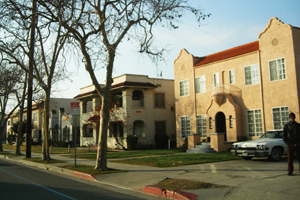
Economists, sociologists and political scientists have recently identified single-family zoning as a major obstacle to building more of it. Could that change soon?
By John Buntin | Governing
Los Angeles has some of the most expensive housing in the United States. The median price of a new home in the city is more than nine times median household income. That makes L.A. one of the 10 least affordable markets for homeowners in the world, let alone the nation. Renters are no better off. In 2015, the average rent in L.A. was $1,390 a unit, more than twice the national average.
Not surprisingly, many Angelenos are fed up. City officials have tried to address the price squeeze by encouraging high-density housing in areas served by mass transit. To promote it, the city council has routinely granted exemptions to the outdated L.A. zoning code. That, in turn, has led to new high-rise developments in the South Park area of downtown, along the Sunset Strip and in Leimert Park, a historic African-American neighborhood in south Los Angeles. It’s not nearly enough. A 2015 report by the state’s Legislative Analyst’s Office concluded that coastal California would need to nearly double the rate of new housing construction to produce enough supply to bring prices down.











